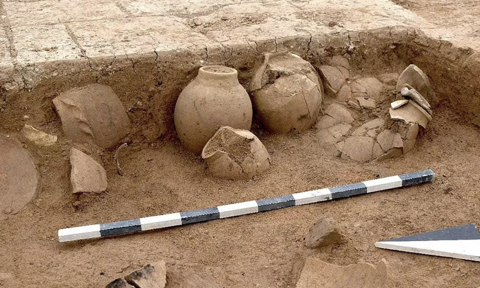
History buffs, make sure you’re sitting down for this one. A Bronze Age city has been unearthed after nearly 3400 years in Iraq, with surprisingly well-preserved artifacts and structures.
Since early 2021, Iraq has been suffering from severe consequences of climate change. The rising temperatures and scarcity of rainfall have caused a drought crisis in the region. This has caused an increased dependency on water storage structures like the Mosul reservoir, the country’s most important source of water at the moment. As the reservoir’s water levels started decreasing, people were shocked to discover a city emerging from the bottom.
German and Kurdish experts from the University of Freiburg and the University of Tübingen started working on uncovering the secrets of the ancient city. As it turns out, it could be Zakhiku, an important center in the Mittani Empire (ca. 1550-1350 BC), which controlled large parts of northern Mesopotamia and Syria.
But the location of the city, and the fact that it was found at the bottom of the reservoir, meant that the researchers had to work quickly to glean as much information as they could from the ruins and preserve it for future investigations.
One of the most surprising discoveries from the area was the fact that the sun-dried brick structures of the city were still well-preserved, despite being submerged underwater for thousands of years. The group also discovered a multi-storeyed storage building, a massive fort with walls and towers, an industrial complex, and a palace. They also uncovered five ceramic vessels that contained over 100 cuneiform tablets from the Middle Assyrian period. Some of these tablets were still in their clay envelopes!
As of now, the site has once again been completely submerged in the reservoir water. But prior to its immersion, the researchers had managed to secure the buildings with tight-fitted plastic sheets and filled the structures with gravel to reinforce their integrity.
The discovery means that researchers will now be able to discover more information about the end of the Mittani period and the beginning of the Assyrian empire.
- Quick links
- archaeology
- history





